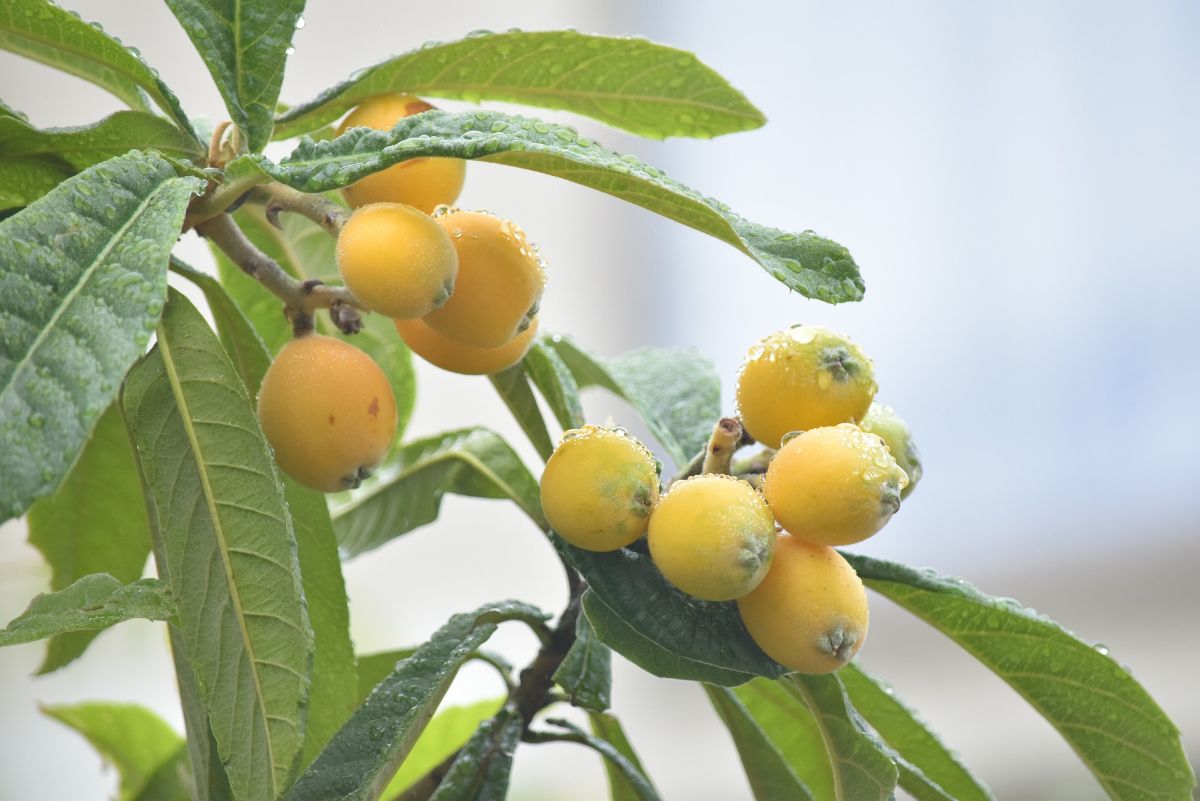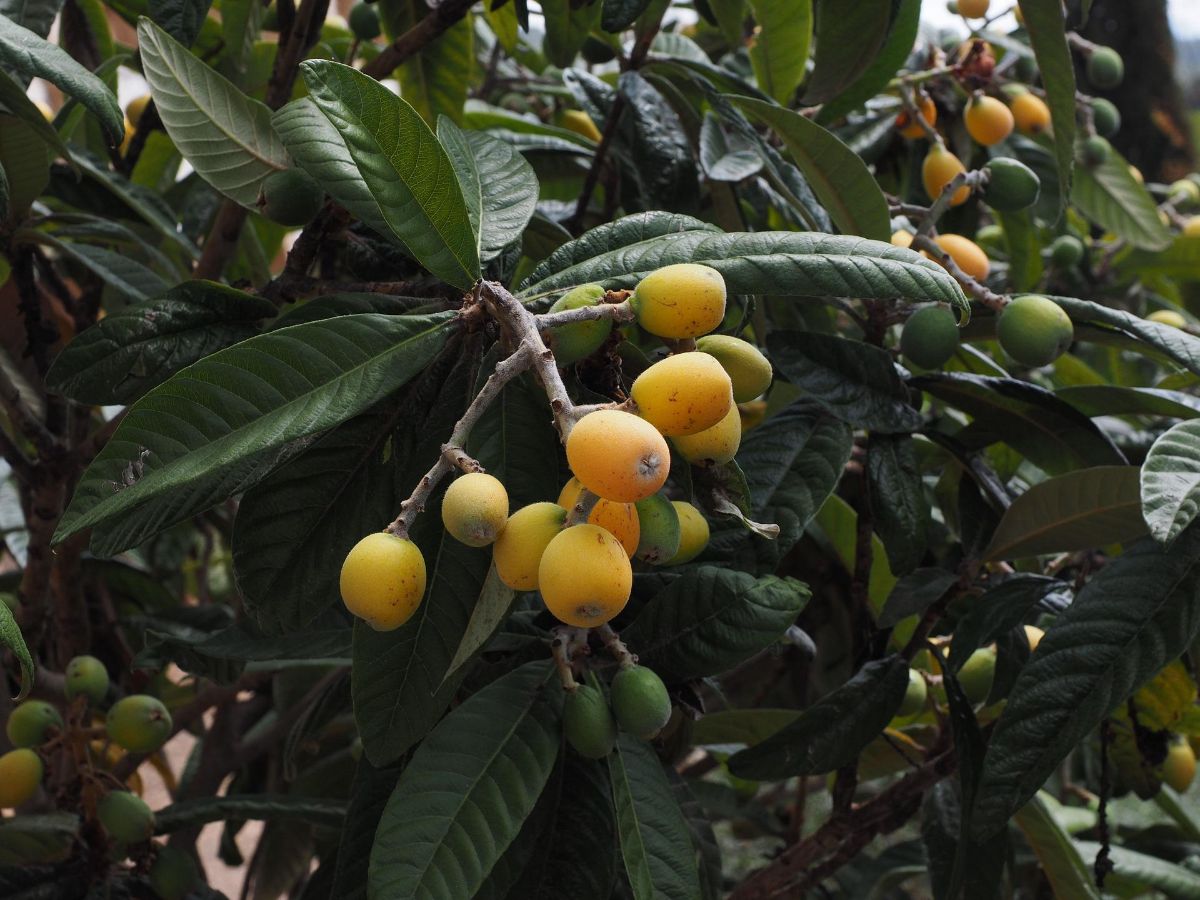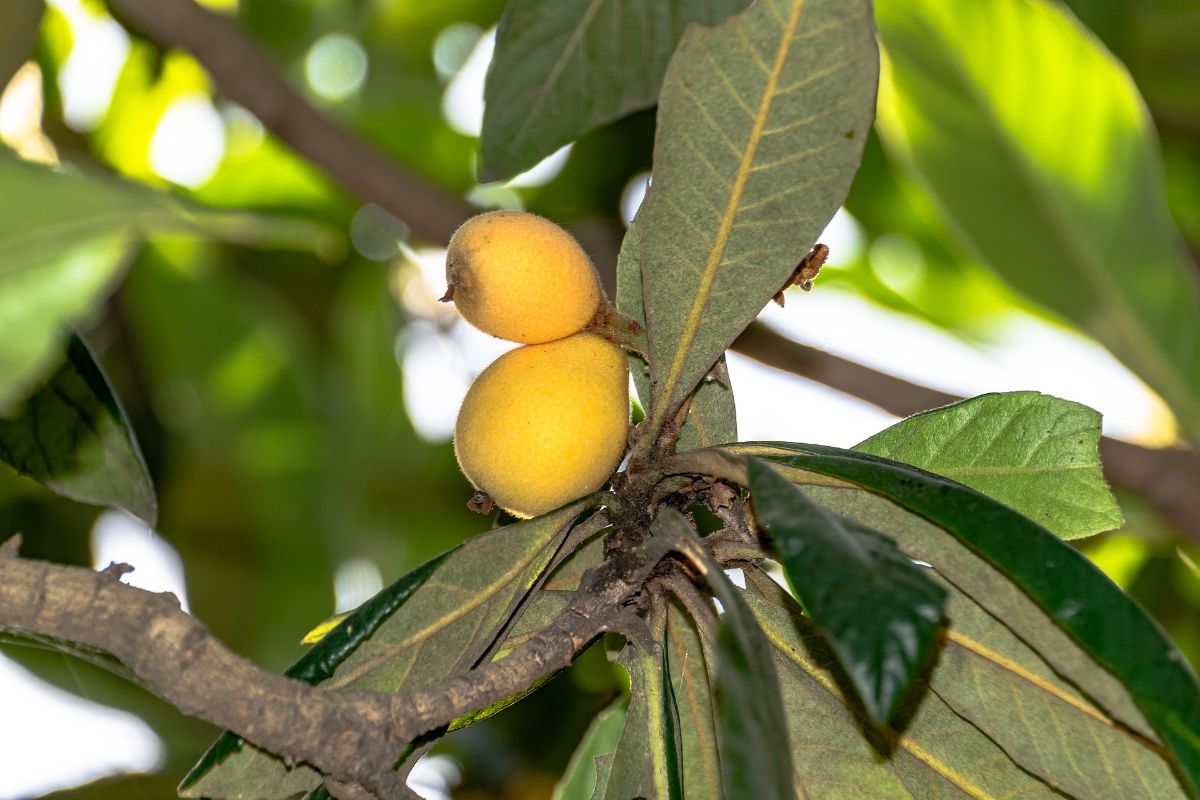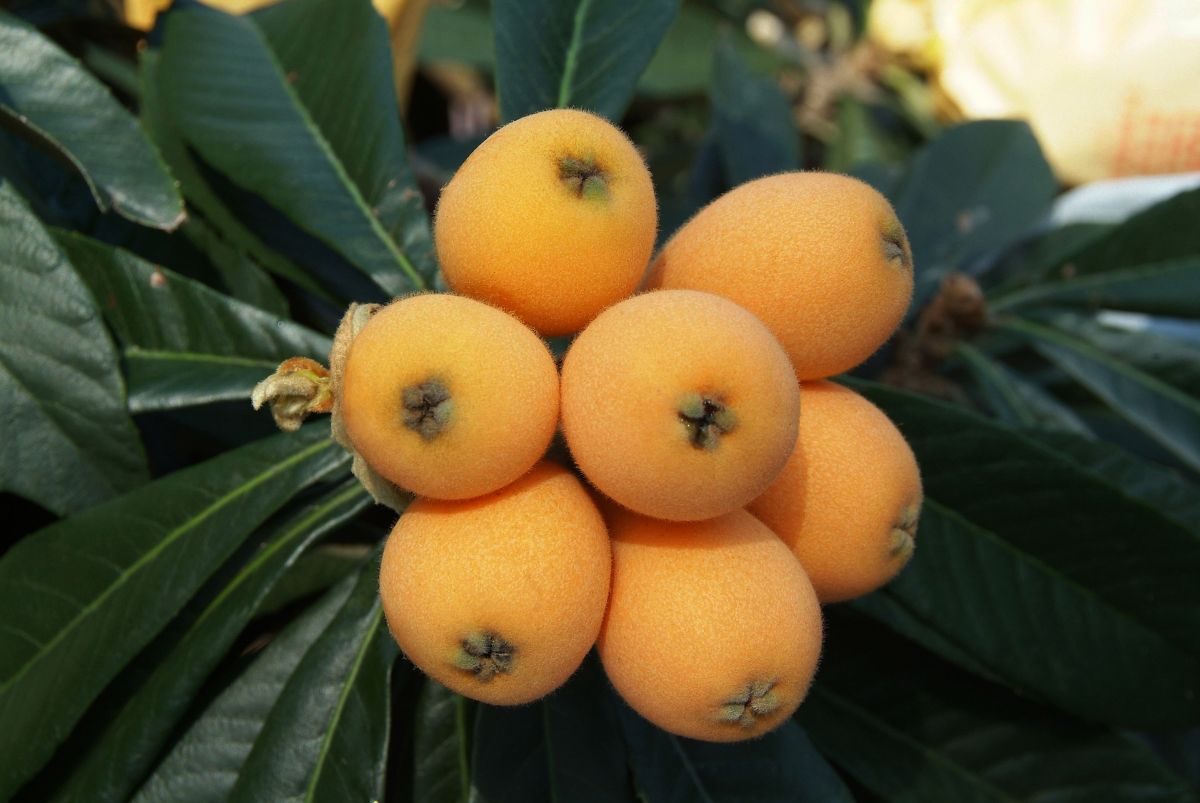
If you have a medlar you will know that, sometimes, you will have to cut its branches so that it continues to grow and develop. But when to prune a loquat?
If you have just realized that you do not know exactly the guidelines to prune your fruit tree, Here we are going to try to help you so that you can take the best care of this living being.
Why prune the loquat

Depending on the objective you want to achieve with your tree, the pruning will be one way or another. For example, it may be that what you want is to increase the production of fruits, because it gives you few; or maybe you want it to produce better quality fruit.
En general, a loquat is pruned for various reasons (and each one has a different way of pruning).
- Because you want to shape your loquat. In this case, a training pruning is done.
- Because you want to care for and increase the amount of fruit it gives you (production pruning).
- In case of cleaning it of branches and leaves that are dry or that interfere with each other (thinning pruning).
- Because you want to rejuvenate it (total pruning).
In this way, the first thing you should ask yourself is why you want to prune a loquat. Depending on your answer, you can choose one type of pruning or another. Do you mean it's only pruned that way? The truth is that no.
We give you an example. Imagine that you have a young loquat and you want to shape it. You would use formation pruning, but what if after a few years it is already formed and now you want something else? It would be done without problem. You would maintain the training pruning to prevent it from getting "wild", but this would be minimal compared to the pruning you want to start at that time (cleaning, production...).
When to prune a loquat

Once you have a clear objective to achieve with pruning, the next step is to know when to do it.
In this case, that medlars should never be pruned in winter, not even in cold weather because they are very delicate and can die after pruning if you do it in low temperatures.
Therefore, experts recommend that, if you choose a time, this be early spring, but taking into account the temperatures that it can do. That is, if it is spring but it is still cold, it is better to wait a bit, at the beginning of summer, which will be much more appropriate.
In autumn, it is not recommended as much because it may not reach winter without having healed those cuts, and it would have greater problems to get ahead.
How to prune a loquat

If you have a loquat and you have seen that it is the right time to prune it, we are going to give you the keys so that you can do it in the best possible way. Do you want to know how? Go for it.
Tools
The first thing will be to get the tools you will need. Be careful, because it will not only be pruning shears, but, depending on how your fruit tree is, you may also need a saw or chainsaw and/or a height pruner.
In general, you should have:
- Pruning shears. They will serve you for branches that are less than 5cm. It is true that it could cut thicker, but you risk that the cut is not fast or clean, and you will make the tree suffer.
- Saw or chainsaw. The first one is useful for branches up to 20cm while with the second one you can cut thicker ones.
- height mower. Ideal for high branches.
This would be on the one hand, but you will also need some stairs in case your specimen is very tall; and protect yourself, with gloves, safety glasses, boots, etc.
Obviously, you are going to use more or less tools depending on the type of pruning you do.
Types of pruning
As we have mentioned before, you not only have to know when to prune a loquat, but also the types of pruning that are carried out.
Depending on your objective, you will choose one or the other based on the following:
Formation pruning
Training pruning can start from the moment you have the young plant, since it consists of customizing its structure and achieving a good base for your loquat.
In this case, you must make sure that you have a central stem of about 40-50 cm. Between 4 and 6 main branches should come out of it, which we could say is the first floor, and then these will form the following ones.
At the time of pruning you have to control that it maintains the base and at the same time that the sun and the air enter perfectly throughout the tree.
Production pruning
Also called fruiting pruning, the goal is both to improve the quality of the fruits as well as increase their production.
And how is it done? You have to stop the tree from growing too tall. To do this, you will cut the vigorous branches and leave the most fruitful ones. You also have to eliminate those that grow vertically and not leave many holes so that the sun cannot burn the branches or the trunk.
thinning pruning
Called cleaning plague, it consists of a minimum maintenance, where you will have to remove the diseased branches from the tree as well as those already dry.
With this you will ensure that diseases or pests do not develop, and on the other hand you will prevent the energy that the medlar spends on those branches from being distributed on those that are really important.
Rejuvenation pruning
The last of the pruning is the most drastic, and at the same time the one that you should be most careful about doing because it is not easy to carry it out with good results.
It occurs when the medlar is already older and the production of fruits has dropped a lot. Thus, it is sought to give it a second life, but at the same time, if you do not do it well, it can end up with the tree.
What should you do? Cut it practically to the first floor that we told you about before. The goal is for it to re-form a new skeleton, obviously maintaining a base.
However, we recommend that you use healing paste on all cuts to prevent diseases or pests from entering. Another option is to use cinnamon powder, which has a good effect on plants and can be of great help.
Now that you know when to prune a loquat and what kind of pruning to do, it's time to get to work if you haven't already. Can we help you with something else?